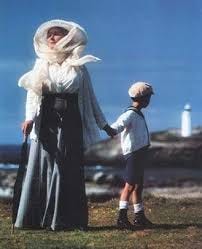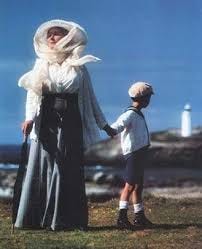Towards the end of the previous post, I referred to Stanley Kunitz’s list of Reflections, published late in his life. This is a series of 14 reflexive statements made by the poet, no more than two or three sentences each, gathering together his filtered wisdom after many years. I will discuss a few of these Reflections in the next posts I write here. I will relate each to some piece of hope-filled literature, and consider where that takes us.
The first Reflection is the one I used at the end of my previous post:
I keep trying to improve my controls over language, so that I won’t have to tell lies. And I keep reading the masters because they infect me with human possibility.
I recently entered my eighth decade and celebrated with my family and friends. I have discovered that were I to spend that portion of life still left to me being infected with human possibility through the lens of great literature penned by masters – I could be content with such an infection.
The master I have chosen to discuss first is Virginia Woolf. When The Guardian Books Editor, Robert McCrum, produced in August 2015 a list of the best novels in English, he reviewed many wonderful titles, and ultimately arrived at ten surnames which he listed in no particular order, and chose one book from each author. The first surname on his list was Austen, the tenth was Fitzgerald. The ninth was Woolf. Six males and four females. Seven British men and women and three American men. Perhaps I will discuss this list as an infection with human possibility in another post. {You may have some fun trying to fill in the gaps in Robert’s list!]
My topic now is Virginia Woolf. I have alluded to the brilliant Mrs Dalloway in other posts. But now I relate To the Lighthouse which I have only just finished – not for the first time. Virginia has a way with her stories that describes life in its barest, most shaved down way. It is a very beautiful way, for it leaves nothing to misinterpretation. It is so direct it can hurt. And yet one must concentrate hard, or the flash of wisdom is gone, apparently lost in a long sentence or overlapping conditional clauses or some other device to cause the unwary reader to detour. So please do not expect an easy read, AND be sure you will be forced to confront the very bones of life, the very behaviours that scar and damage, or uplift and transcend, in our lives. I think this is what Stanley Kunitz referred to in his Reflection.
To the Lighthouse is set in three parts. First, before WW1, second, a brief covering of the years in between, and third, after WW1, ten years later. The first episode follows the Ramsay family and their house guests on a summer holiday on the Isle of Skye; the third episode is a similar holiday, sadly scarred owing to the awful events in between. The title is taken from an expedition in part three when some members of the family sail to the lighthouse in the bay. The journey has an almost mystical quality as it is mooted during part one, but not achieved. In part three, it is. As the lighthouse is attained, the novel ends. Therefore on the surface To the Lighthouse is about summer holidays; beneath, it is about life – what is it? and now that it’s here, how do we live it?
As a brief background to the following piece, Mr Ramsay is accompanied by his son James and daughter, Cam. Macalister and his lad make up the numbers as crew for the dinghy. James is now 16. He was 6 in the first part of the story when he obsessed as a child does with the adventure of sailing to the lighthouse. Alas he is let down as a child, by a combination of bad weather and curmudgeonly behaviour by his elders, none of whom save his mother understand his strength of desire. As a teenager he is more fortunate, though his desire is now black, as you shall see.
James kept dreading the moment when he [Mr Ramsay] would look up and speak sharply to him about something or other. Why were they lagging about here? he would demand, or something quite unreasonable like that. And if he does, James thought, then I shall take a knife and strike him to the heart.
He had always kept this old symbol of taking a knife and striking his father to the heart. Only now, as he grew older, and sat staring at this father in an impotent rage, it was not him, that old man reading, whom he wanted to kill, but it was that thing that descended on him – without his knowing it perhaps: that fierce sudden black-winged harpy, with its talons and its beak all cold and hard, that struck and struck at you (he could feel the beak on his bare legs, where it had struck when he was a child) and then made off, and there he was again, an old man, very sad, reading his book. That he would kill, that he would strike to the heart. Whatever he did – (and he might do anything, he felt, looking at the lighthouse and the distant shore) whether he was in a business, in a bank, a barrister, a man at the head of some enterprise, that he would fight, that he would track down and stamp out – tyranny, despotism, he called it – making people do what they did not want to do, cutting off their right to speak.
My first thought when reading – ‘oh my gosh, I am found out – for the unkind, unthinking, authoritarian tyrant I have sometimes been as a parent’. Is there anyone reading this who cannot admit to even the smallest alignment with Mr Ramsay’s behaviour – at some time in his life, with someone or other dear to him, less powerful than him, with other people watching his example of so-called parental leadership? Do it my way. That’s it, and all you are going to get.
Virginia defines it differently after a moment’s thought. It is not Mr Ramsay per se that James is going to strike to the heart, it is a horrid thing, a black-winged harpy, that descends on and takes over the parent, causing him/her to misbehave, to adopt a style of parenting only known as unthinking authoritarianism. Yet thinking about it, from the child’s perspective, it does not really matter if it is the father he strikes or the avatar; the stranglehold on the child’s patterns of identification of hope, of possibility, of independent thought leading to different actions remains tight, the control is total, the child is (as Virginia says) impotent.
There are two channels hereby to my desired outcome, that is to be infected with human possibility. Firstly, a problem identified is three-parts solved. By naming the parental control, by giving it profile in one of her books, by using strong and direct language referring to patricide, Virginia plays the true activist role – ‘here is something awful, let me insert a flower into the barrel of it, here is demonic patriarchal power, naked to the vision, and ugly’. Virginia names and shames the tyranny of thought control, abhors it (as did Pink Floyd with their ‘dark sarcasms in the classroom’ some fifty years later), and castigates its consequences. And secondly, the final sentences of the piece illustrate that James sees the crime, and he can and will ‘track down and stamp out – tyranny, despotism, he called it – making people do what they did not want to do, cutting off their right to speak.’
This is the zone of human possibility so ably detailed by Virginia Woolf in her novel, To the Lighthouse. When I read writing like this, I cheer to the rooftops. And there are many other examples in her novels, manners of circumstance long since outdated yet extant, or mischievous behaviours that are still current in our world. Also ways of interpreting the world, based on perspectives both false and true. Virginia instils in me a sense of excitement as she writes her astonishing novels, which not only tell a marvellous story, and yet more, examine the very roots of behaviours and their cultured backgrounds, their outcomes, their variability for future generations, and their powerful grip on how we live our lives.




